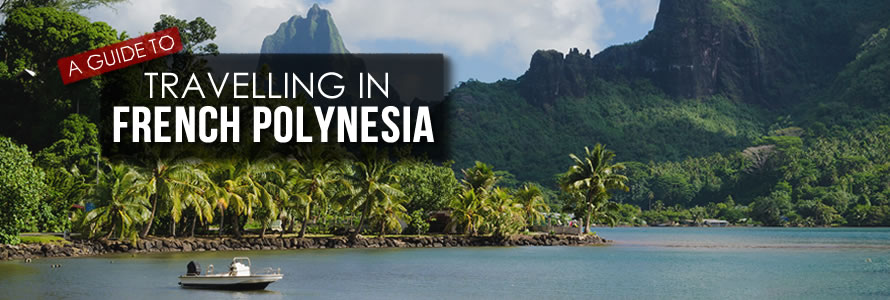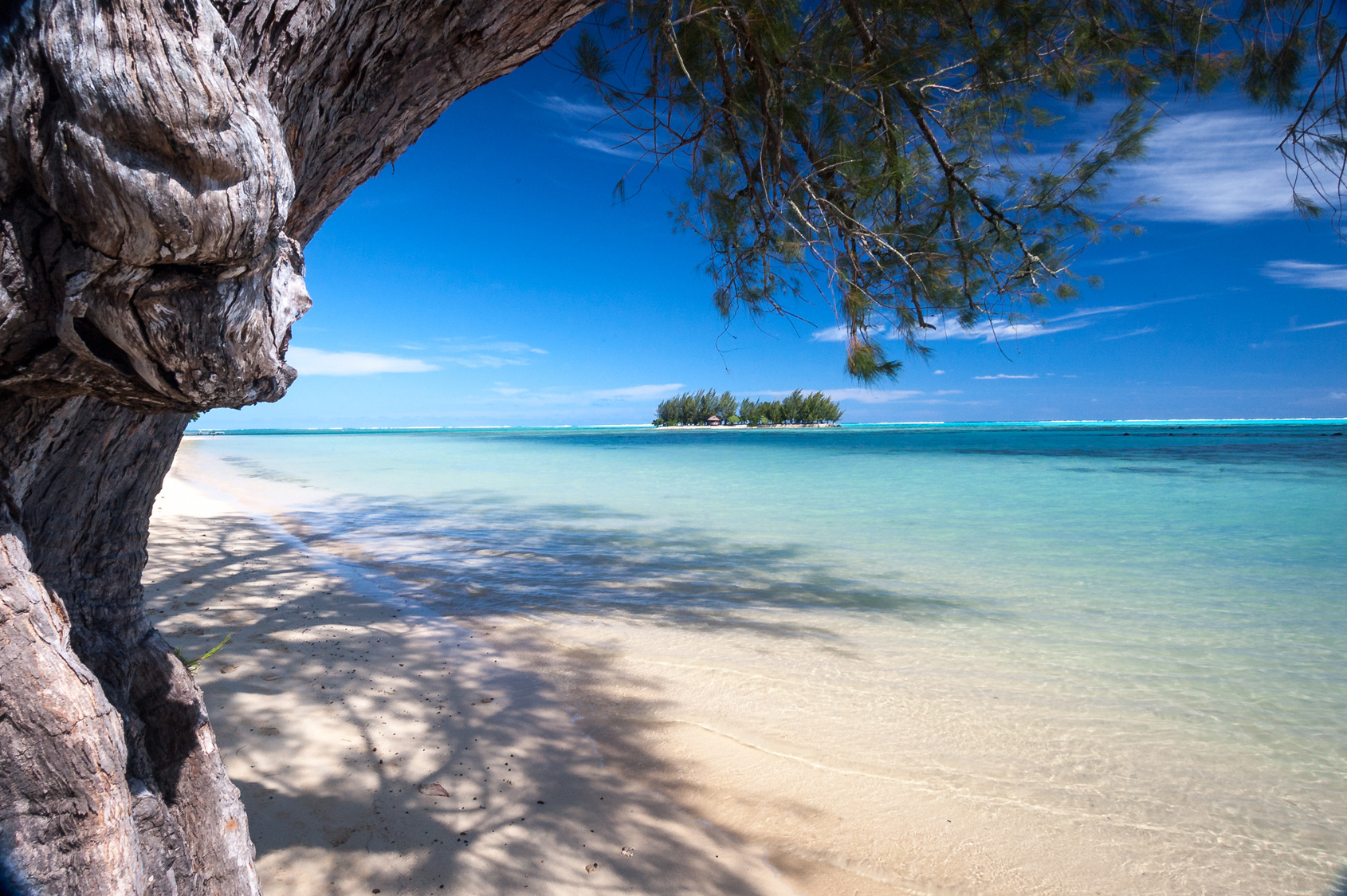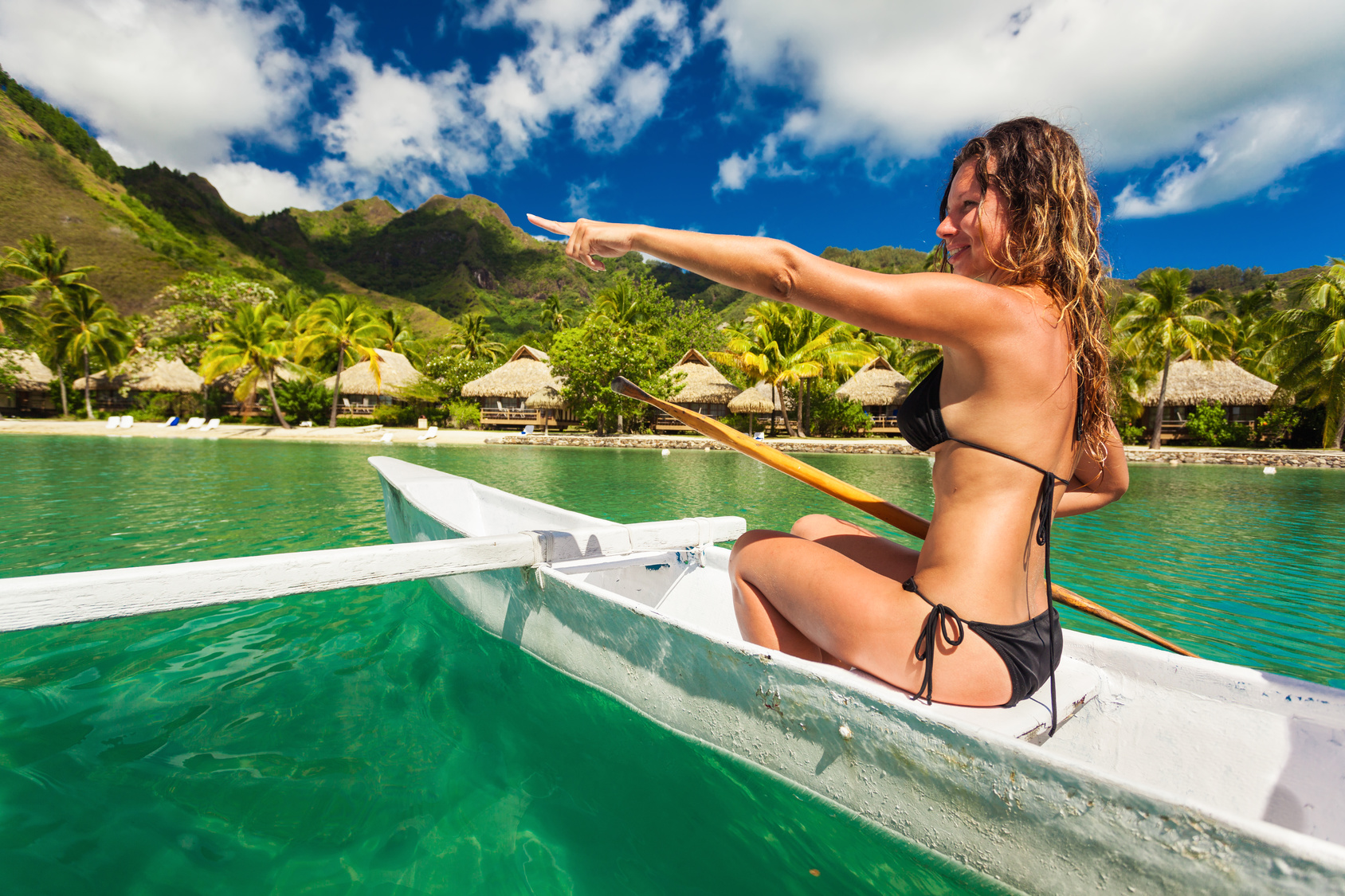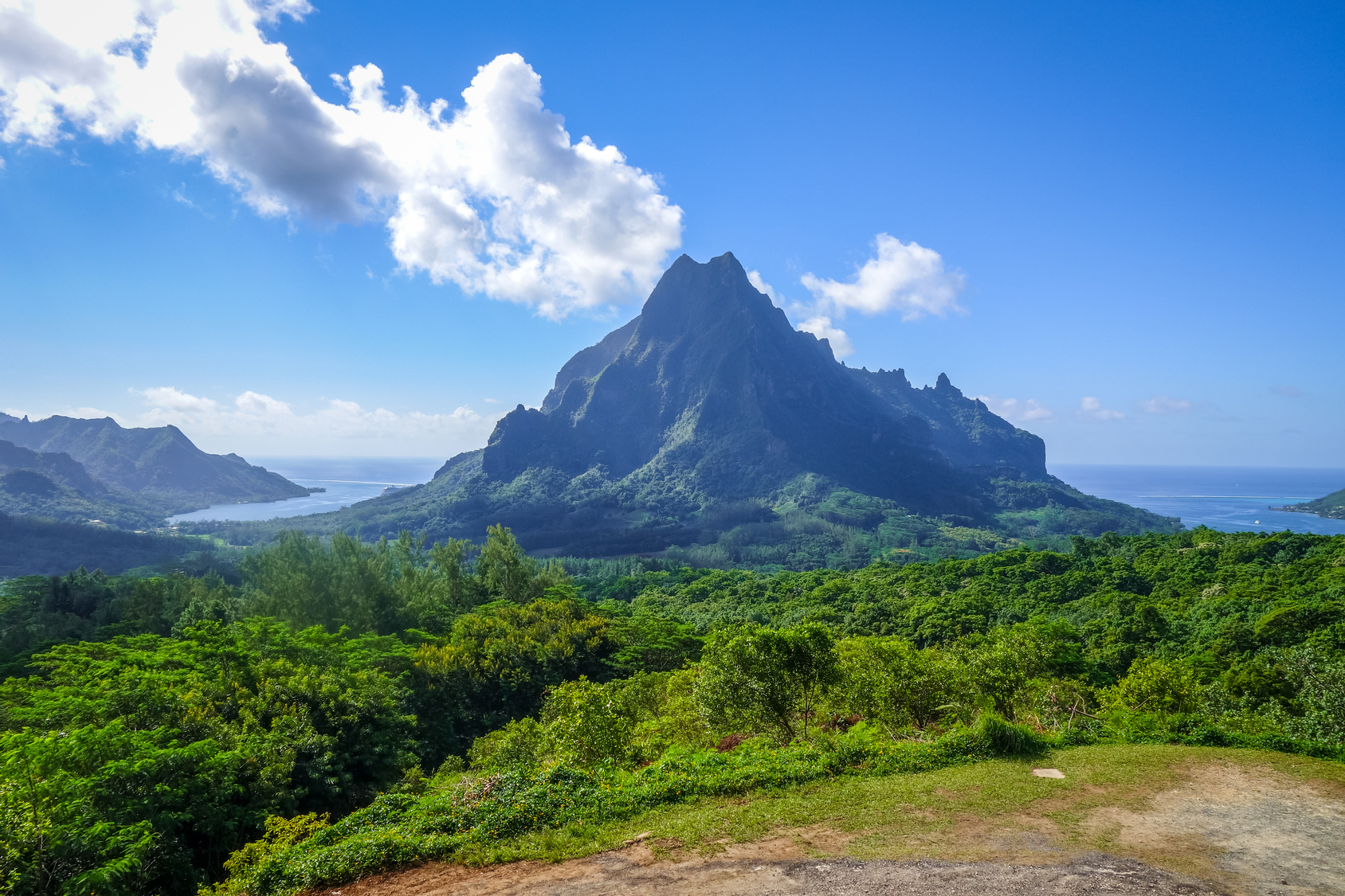Discovered by the British in the mid 1700’s and later claimed by the French during the 1800’s, French Polynesia remains today under the umbrella of French administration with French one of its official languages.
For all those who take the time to lift their heads from their beach towel or remove their snorkel there are many things to be enjoyed, discovered and explored in French Polynesia. These include large archaeological sites, ancient temples, lush jungles filled with waterfalls, soaring peaks, fascinating local flora and fauna, vanilla and pineapple plantations and a playground for all kinds of activities from surfing to skydiving.
In this guide we give you an overview of essential travel information, as well as highlights of French Polynesia that you might want to add to your itinerary.
Visas
Visa requirements are more or less in line with those of France, of which French Polynesia is a collectivity. Nationals of the majority of countries can enter for stays of anything between 1 to 3 months without a visa. EU citizens, along with those of several other countries – which include Australia, Canada and New Zealand – can all remain in the islands for a maximum of 3 months. In order to enter French Polynesia you may have to show proof of onward travel.
Weather & Seasons of French Polynesia
With its proximity to the equator French Polynesia enjoys a tropical climate with a hot and humid season (summer) which runs from November to April and a cooler season (winter) spanning May to October. As an equatorial zone its temperatures have little variation year round hovering around the 29º C mark during the day and 22º C at night. These averages fall slightly as you move down the island chain. The hot season also sees the most rain.
Seasons are also divided into high, low and shoulder season which affect the number of tourists and prices. Low season is March/April and October/November. The shoulder season months are February, May and September. High season – when island prices are hiked to their highest – is June to August and December to January.
Safety in French Polynesia
Crime rates in French Polynesia are low although like all places where tourists head there is some small level of pick-pocketing and petty theft. As the islands are part of overseas French territory all defence and policing is provided by France and is thus delivered at a standard comparative with that in Europe if problems do occur.
French Polynesia is wonderfully low-risk on the natural front too as it is free of any poisonous land snakes or spiders and crocodiles are not present here. It is also a destination free of malaria although as mosquitoes are present other mosquito-borne illnesses such as dengue fever and chikungunya are present, so make sure you use insect repellent.
Your biggest risks here are sunburn and insuring any minor cuts don’t get infected in the humid tropical environment.
Accommodation Options
If money is no object French Polynesia has a wealth of high-end resorts and luxury accommodation options with Bora Bora leading the way as the shining standard of what indulgence can be. Over-water bungalows with built-in glass floors for the sensation of snorkelling without moving a muscle are this island’s signature theme. However, this is not the end of the story because French Polynesia also offers plenty in the way of more affordable accommodation for backpackers; indeed the only accommodation you might find in some of the more off-the-beaten-path islands is that of the more rustic and basic kind.
Four out of every five beds available throughout the entire destination of French Polynesia are found on just three islands – Tahiti, Bora Bora and Moorea. This of course means there is the most choice here.
Hostels – These are generally the backpackers’ accommodation choice but French Polynesia only has one, in Papeete, Tahiti.
Lower-end hotels – Plenty of these throughout the islands, often family run and homely.
Guest-houses and pensions – Typically on the small and intimate side, there are tons of family-run guest-houses and pensions throughout French Polynesia with both Moorea and Tahiti having them by the bucket-load. These are almost always the cheapest option for accommodation and surprisingly cheaper per night than you might have imagined. Besides being a great budget choice these options are also a good pick for those looking to get a closer and more genuine glimpse into Polynesian life as well as the chance to sample some local cuisine. Many of this type of accommodation are offered on a bed and breakfast basis.
Airbnb and other owner-direct rentals – Choices here include everything from very reasonable apartments to top of the range luxury. The majority are located on Moorea, Bora Bora or Tahiti and most ask for at least a minimum stay of 2 nights.
French Polynesia’s Food & Drink
As a collection of exotic tropical islands under the umbrella of France its food typically offers a blend of both cuisine styles. Surrounded everywhere by waters teeming with life, fish as fresh as it comes is found on the menu with consistent regularity and comes in 1001 forms. Otherwise the typical flavours of French Polynesian food rely heavily on lime, pineapple, coconut and vanilla.
On the more populated islands you can expect to find a great diversity of cosmopolitan dishes available too which include Asian. If you are looking for cheaper dining options in Papeete keep an eye out for the roulettes. These are food trucks which offer a variety of cuisine and set themselves about with a few tables for diners.
Where drinks are concerned it will come as no surprise to learn tropical fruit juices are common – all prepared freshly from local produce. Also not surprisingly due to its links to France, wine is a common alcoholic tipple and the islands even produce their own beers.
Language
The most commonly heard language in French Polynesia is French which also happens to be one of its official languages; the other is Tahitian. English speakers are not hard to find either especially in the main tourist centres and islands.
Money
The currency used in French Polynesia is the French Pacific Franc which is Euro linked however the Euro and the US Dollar are also widely accepted. Major company credit cards can be used at some hotels, restaurants and shops.
ATMs are found scattered throughout the island group but are not present everywhere so it is always best to check in advance to avoid finding yourself somewhere without cash or the ability to grab some more from a machine/bank and also without the possibility of using credit cards.
Generally speaking French Polynesia is not a cheap destination and living costs are high for locals and visitors alike.
French Polynesian Cultural Issues
The culture of French Polynesia is as exotic as its natural wonders, drawing as it does on its ancient Pacific island indigenous roots overlaid with French colonialism. All of this is colourfully blended and presented through its language, cuisine, food, traditions, clothing and crafts.
French Polynesians are known throughout the world as a relaxed, warm and welcoming people living their lives in a laid-back island way with first world influences and standards; a set-up almost ideal for any visiting traveller.
Generally speaking you are unlikely to find yourself stumbling into any cultural faux-pas here as long as you strive to be respectful of the people and the land; a rule that is best followed wherever you go on the planet.
Transport Options
As French Polynesia sits in a remote South Pacific location the vast majority of visitors here will arrive by plane. The other option is to wheedle your way onto one of the yachts which regularly run routes between here and Australasia or Latin America.
Transport on the islands – Most of the islands and atolls are so small that getting around is easily achieved on foot. Tahiti’s size makes it the only island which really merits anything in the way of public transport and this is mainly delivered by way of buses serving the entire island. These used to come in the form of a fleet of trucks but these are all gradually being replaced with more modern and reliable (and decidedly less colourful) vehicles. Taxis are also present but not cheap as are car and scooter hire for those who prefer to do things at their own pace and on their own schedule.
Island hopping – Although many visitors here choose one island and stick to it, the more active and intrepid traveller will almost certainly want to explore further and luckily there are ways to do this. Connections between the larger islands run on well established and regular schedules. Getting yourself to the more remote islands will take considerably more thinking about and time but will reward you with journeys to remember if you have any sense of fun and adventure.
By air – If price is no issue you can helicopter your way from island to island otherwise there are plenty of domestic plane flights within French Polynesia which link the different archipelagos. For those on limited funds check out the air passes offered by Air Tahiti which cover anything from two islands to several.
By boat – Quite how easily you can hop from island to island by boat will depend where you are and where you want to get to. The main tourist centres of Tahiti and Moorea for example have several companies which ferry passengers (and some also cars) to and fro between the two islands daily and any number of tours are available too which take in both islands. Elsewhere options by passenger boat are rather more limited and entirely absent in some of the archipelagos.
Cargo ship – Although – as their name suggests – cargo vessels are primarily focused on delivering freight, some of them will take passengers too. If you are looking for comfort and luxury you had better skip the cargo ship option or risk a journey more akin to a nightmare than the trip of a lifetime. However, for those looking for some true adventure this is definitely the way to go. More often than not you will be sleeping on deck under the stars in your own sleeping bag and having to cater for yourself 100%. Depending on where you are headed you may need to plan well ahead if you choose to go down the cargo/ferry route as schedules run in various rotations. This sees journeys several times a week in the well populated Society Islands to only once a month in more remote parts.
Essential Highlights of Polynesia
- Snorkelling, swimming and kayaking the crystal lagoons – Warm turquoise waters with incredible visibility and thousands of rainbow-coloured fish, turtles, sting rays and even dolphins to make friends with. For many people the impossibly beautiful lagoons, the coral gardens and the marine creatures which inhabit them are both beginning and end of all they want to see and do while in French Polynesia
- Scuba diving with dolphins and sharks – Visibility up to 45 metres, 27° C water temperatures, abundant coral and an ocean teeming with marine life make French Polynesia a popular destination for divers. However, factor in an astonishing number of shark species – some of which are seen in huge shoals at a time – and you have somewhere which regularly claims a top space on ‘best of’ lists the world over. The Tuatmotus rank most highly as shark central for divers.
- Explore the jungles, hills and mountains – Beyond the beaches and lagoons are often lush tropical jungles, hills and mountains to be explored. Hidden away within the interiors of many islands are waterfalls, ancient temple sites, vanilla plantations and wildlife. Climbing to any height will often reward you with breathtaking panoramic views which take in islands, atolls, lagoons and reef all at once. Hiking opportunities abound or if that seems like too much work you can opt for a jeep safari or horseback ride to go adventuring inland.
- Archaeological sites and ancient culture – Hidden amidst exotic interiors are several archaeological sites of interest dating back more than 1000 years in places. Top sites include Fa’ahia on Huahine, Marae Taputaputea on Raiatea (now a UNESCO World Heritage Site) and the restored stone temples of Maeya Maraes, also on Huahine.
- Whale watching – Mighty humpback whales pass through the waters of French Polynesia on their yearly migration path and can be seen here from July to October. Several boat tours operate to get you close to the action and there are even outfits which aim to get you into the water snorkelling with them if conditions are right. Rurutu in the Austral Islands is a particular hotspot.
Museums – Culture vultures will find a few choices scattered around the islands. Here are our top picks…
- Museum of Tahiti and the Islands, Tahiti – This coconut grove-set museum is considered to be the most significant collection of cultural and natural history of Polynesia.
- The Paul Gauguin Museum, Tahiti – The great French post-impressionist artist Gaugin lived in French Polynesia from 1891 until his death in 1903. The Musée Gauguin tells the story of the artist’s time in the islands as well as displaying some original prints and drawings.
- Maison de James Norman Hall, Tahiti – The former Tahitian home of Mutiny on the Bounty co-author James Norman Hall from 1920 to 1951 is today a museum filled with personal items. Worth a visit for both literary fans as well as those interested in Polynesian history.
To learn more about the Islands of French Polynesia, check out our Island Guide!




